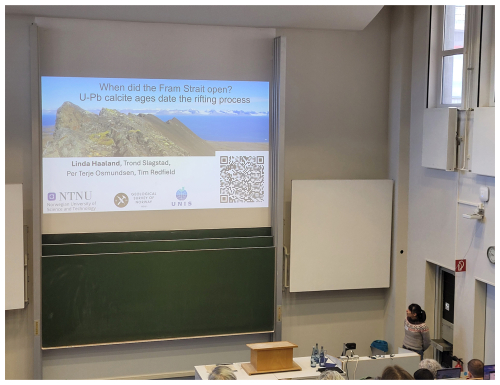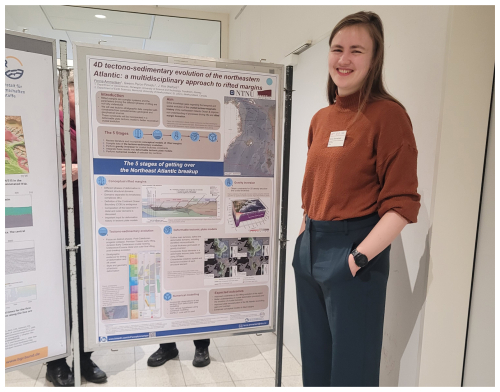The 10th edition of ICAM was held in Bremen from 16–21 March 2025. It was jointly organized by the Universität Bremen and the Alfred Wegener Institute – two large German institutions in Arctic and marine geosciences (Fig. 1).
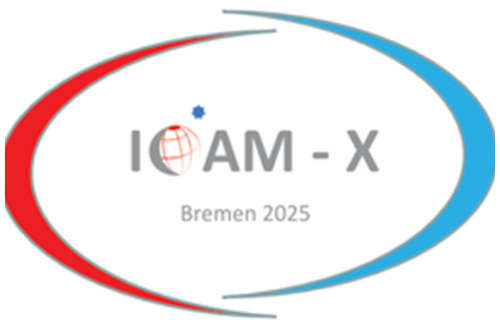
Figure 1The logo of the 10th ICAM, illustrating the collaboration of the Universität Bremen and the Alfred Wegener Institute through their characteristic colors. © 2025 10th International Conference on Arctic Margins (ICAM-X). Used with permission.
For this edition, 119 participants were enrolled from institutions in 14 countries, showcasing the international character of Arctic research (Fig. 2). The traditionally Arctic countries of Canada, Denmark, Norway, and the US attended. However, the global interest in the Arctic was evident by attendees from Australia, China, Finland, France, Germany, Italy, Japan, Poland, Sweden, and the UK. Encouragingly, while women are still underrepresented in Arctic science and geoscience, 40 % of the ICAM-X participants were female.
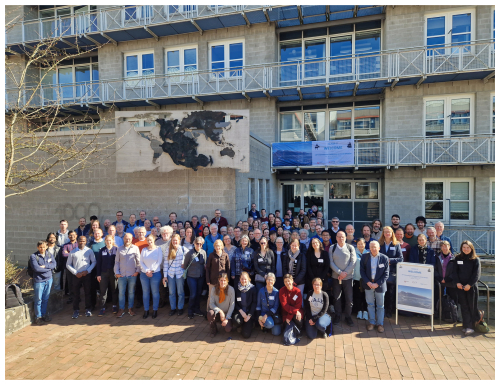
Figure 2The attendees of the 10th ICAM enjoying the spring sun outside the venue at the Universität Bremen. © 2025 10th International Conference on Arctic Margins (ICAM-X). Used with permission.
2.1 Scientific program
The scientific program of ICAM included eight different sessions over four days. The sessions were as follows:
-
Evolution & structure of the crust and lithosphere in the Arctic,
-
Digital Arctic,
-
Deep-time climate archives & the impacts on life and the environment,
-
Arctic Education & Outreach,
-
The Opening of the Arctic Ocean,
-
Arctic Geopolitics, Governance & Society,
-
Scientific drilling on Arctic margins: past achievements & future opportunities,
-
Open session.
The diverse sessions covered traditional Arctic research themes (1, 5) but also the sharing and integration of Arctic data (2), understanding past and present-day climate fluctuations (3, 7), improving Arctic science outreach and communication (4), the impact on Arctic geopolitics, (6) and, finally, an open session for novel and multidisciplinary topics.
The conference followed a single-track structure, meaning that there were no parallel talks, and all participants were able to attend all sessions. This structure facilitated plenty of interdisciplinary discussions. Additionally, the poster contributions were on display throughout the conference. This was a perfect catalyzer and opportunity for further scientific discussions, also beyond the official poster sessions.
2.2 Social program
The social program of ICAM began with a guided tour through the city of Bremen, followed by an icebreaker at the beautiful Übersee Museum Bremen (Fig. 3). This was a great way to informally kick off the conference week, by both reconnecting with old faces and making new connections. The abundance of spring sun during the conference turned the outside benches into a prime spot for further networking and socializing during the coffee breaks.
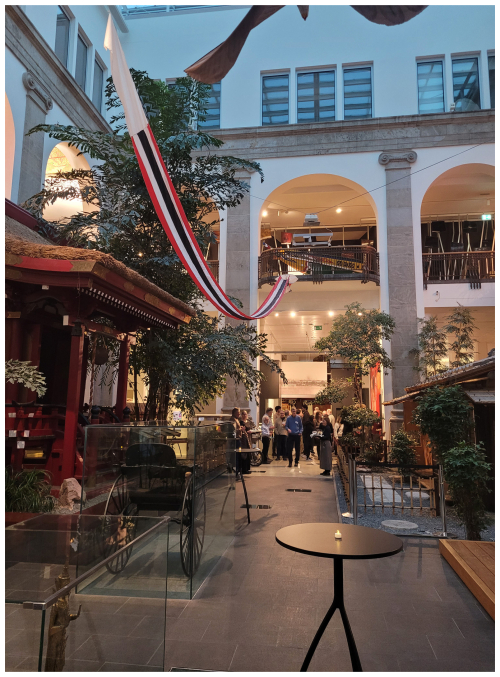
Figure 3The thematic venue for the icebreaker at the Übersee Museum Bremen.
Download
After the four days of sessions, the participants could join a post-conference excursion to the Alfred Wegener Institute or the Center for Marine Environmental Sciences (MARUM). A highlight of this excursion was the International Ocean Discovery Program (IODP) Bremen Core Repository, hosting more than 192 km of drilled cores. These data have been fundamental to our increasing understanding of the Arctic margins and was therefore a unique experience to see in person (Fig. 4).
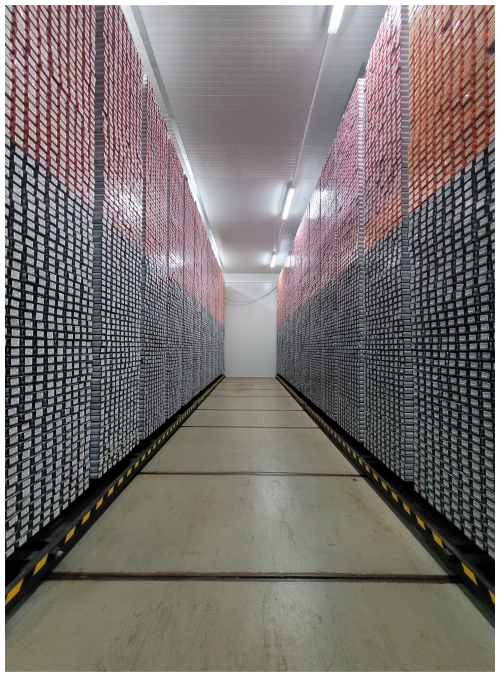
Figure 4One of the aisles of the IODP core repository in Bremen hosted by MARUM. In this repository, more than 192 km of drill cores have been stored.
Download









